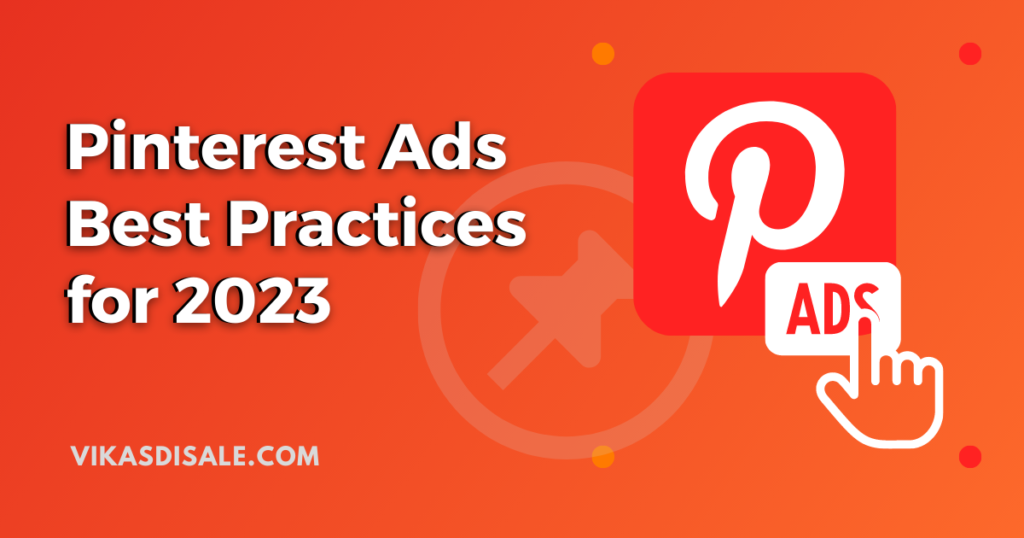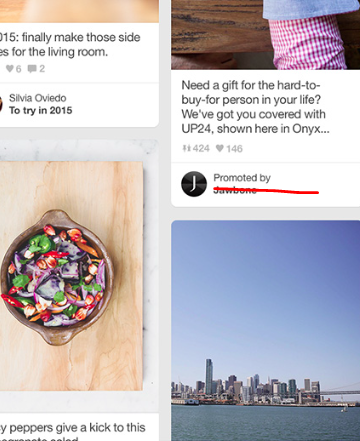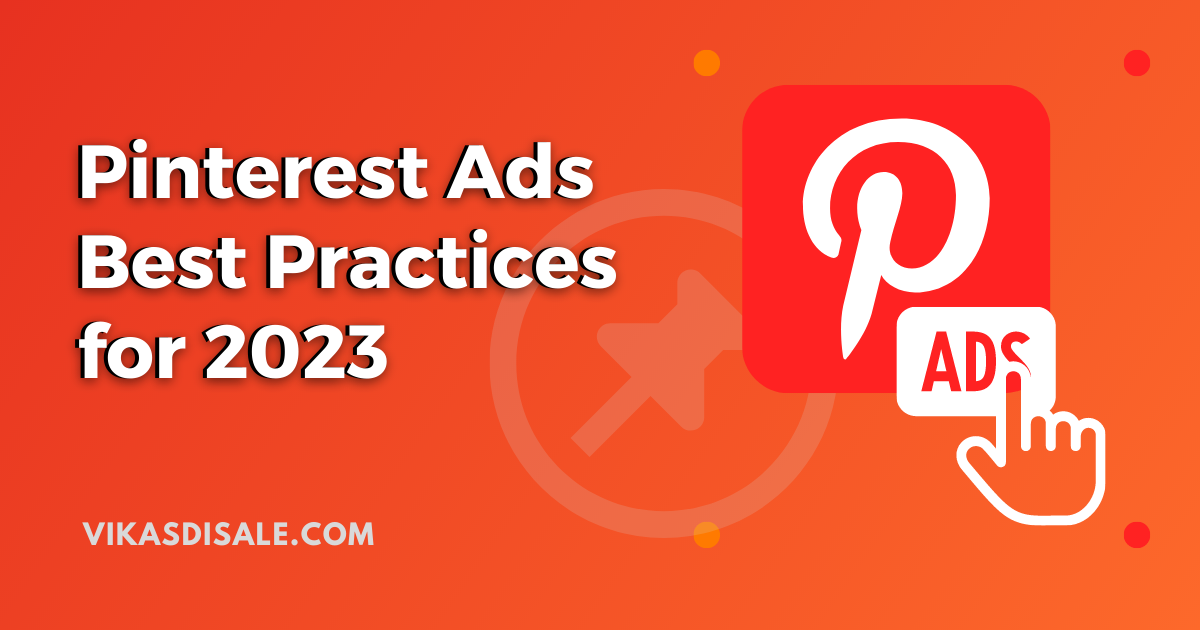
Pinterest ads are a form of advertising on the social media platform Pinterest. Pinterest is a visual discovery and bookmarking platform where users can find and save ideas for various topics such as home decor, fashion, recipes, travel, and more. Pinterest has 450 million monthly active users. Pinterest ads allow businesses to promote their products, services, and content to reach a wider audience and drive traffic to their websites or online stores.
Benefits of Pinterest Advertising:
There are several reasons why businesses should consider using Pinterest ads as part of their advertising strategy:
1. Visual Appeal:
Pinterest is a highly visual platform, making it ideal for showcasing products and services. The visually appealing nature of Pinterest content can capture users’ attention and inspire them to engage with your ads.
2. High Engagement:
Pinterest users actively search for inspiration and ideas, making them more receptive to advertising. They are often in a discovery mindset, which can lead to higher engagement rates and increased brand awareness.
3. Targeted Reach:
Pinterest offers robust targeting options to ensure your ads reach the right audience. You can target based on demographics, interests, keywords, and customer lists, allowing you to connect with users who are more likely to be interested in your offerings.
4. Increased Website Traffic:
Pinterest ads can drive quality traffic to your website or landing page. With each Pin linking directly to a website, users can easily click through to learn more or make a purchase, helping you drive conversions and achieve your marketing goals.
5. Brand Exposure:
Pinterest allows your brand to gain exposure among its large and diverse user base. Users can save and share your Pins, expanding your brand’s reach and potentially generating organic impressions beyond your initial advertising efforts.
Types of Pinterest Ads
1. Promoted Pins:
Promoted Pins are native ads that seamlessly blend with organic content on Pinterest. They appear on users’ home feeds, search results, and category feeds, enabling advertisers to showcase their products or services in a visually appealing manner. Promoted Pins have the advantage of being highly engaging and can be saved, shared, and clicked by users, driving traffic to your website or landing page.

2. Video Pins:
Video Pins are a captivating form of advertising on Pinterest. With the popularity of video content, advertisers can leverage Video Pins to grab users’ attention and increase engagement. These promoted videos auto-play in users’ feeds, providing an immersive experience. Video Pins are an excellent choice for storytelling, demonstrating product features, or showcasing brand values.
3. Shopping Ads:
Pinterest’s Shopping Ads are designed to help businesses drive sales and boost conversions. These ads display product details, including images, descriptions, and prices, directly on the Pin. Users can click on the Pin to view more information and make a purchase. Shopping Ads are particularly useful for e-commerce businesses looking to showcase their products and attract users who are ready to make a purchase.
Creating and optimizing a Pinterest business account:
To get started with Pinterest advertising, you’ll need to create a Pinterest business account or convert your personal account into a business account. This will provide you with additional features and tools for ad management and analytics.
Optimize your business account by providing accurate and compelling information about your brand, including a clear profile description, relevant boards, and high-quality visuals that align with your brand identity.
Setting up ad accounts and selecting campaign objectives:
Within your Pinterest business account, you’ll need to set up an ad account. This involves providing billing information and setting your currency and time zone preferences.
Next, select the campaign objective that aligns with your marketing goals. Pinterest offers a range of objectives, such as brand awareness, traffic, engagement, app installs, and conversions. Choose the objective that best suits your campaign goals.
Ad targeting options
1. Demographic targeting:
Pinterest allows you to target your ads based on various demographic factors, such as age, gender, location, and language. This targeting option ensures that your ads are displayed to the most relevant audience who are more likely to engage with your content and take the desired action.
2. Interest-based targeting:
Pinterest users are known for their active engagement with content that aligns with their interests and passions. By leveraging interest-based targeting, you can reach users who have demonstrated an affinity for specific topics, categories, or hobbies. This targeting option helps you connect with users who are more likely to be interested in your products or services.
3. Keyword targeting:
Pinterest functions as a search engine, with users actively searching for inspiration and ideas. By utilizing keyword targeting, you can display your ads to users who are searching for specific terms or phrases related to your business. This ensures that your ads are shown to users actively looking for products or services like yours, increasing the chances of conversions.
4. Customer lists:
If you have an existing customer base or a specific audience you want to target, Pinterest allows you to upload customer lists. By utilizing this option, you can create a custom audience and deliver tailored ads to users who are already familiar with your brand. This targeting method can be highly effective for retargeting campaigns or upselling to existing customers.
Setting budgets, bidding strategies, and ad formats:
Determine your ad budgets based on your available resources and campaign goals. Pinterest allows you to set daily or lifetime budgets for your campaigns.
Choose the bidding strategy that aligns with your objectives, such as cost per click (CPC) or cost per thousand impressions (CPM). Set bid amounts that reflect the value you’re willing to pay for each click or thousand impressions.
Ik;hnytgrfdio9l0p-gf n,//
Select the appropriate ad formats based on your campaign objectives and creative assets. Pinterest offers options like Promoted Pins, Video Pins, and Shopping Ads. Choose the format that best showcases your products or services and resonates with your target audience.
Utilizing conversion tracking and analytics for campaign measurement:
Utilizing conversion tracking and analytics in Pinterest ads allows businesses to measure the effectiveness of their campaigns. By implementing the Pinterest Tag on their website and defining conversion events, businesses can track user actions such as purchases or sign-ups.
With conversion reporting and analytics, they can analyze key metrics like conversions, conversion rates, and cost per conversion to assess campaign performance. Attribution modeling helps understand the impact of different touchpoints on conversions.
By leveraging these insights, businesses can optimize their campaigns, make data-driven decisions, and drive better results on Pinterest.
Pinterest Ad Campaign Examples:
Here are some examples of Pinterest Ad Campaigns:
1. Fashion Retailer:
A fashion retailer could create a Promoted Pin campaign showcasing their latest collection. By targeting users interested in fashion, they can drive traffic to their website and encourage conversions.
2. Home Decor Brand:
A home decor brand could leverage Video Pins to showcase before-and-after transformations or DIY tutorials. This engaging content can drive brand awareness and inspire users to explore their product offerings.
3. Travel Agency:
A travel agency could create a Promoted Pin campaign featuring popular travel destinations. By targeting users interested in travel and wanderlust, they can generate leads for travel packages or direct bookings.
4. Food and Recipe Blog:
A food and recipe blog could create a Promoted Pin campaign featuring mouth-watering food images and linking to their recipe blog posts. This can drive traffic to their website and increase their blog readership.
Staying updated with Pinterest advertising trends means keeping yourself informed about the latest changes and developments in how Pinterest ads work. It’s important because these trends can help you make your ads more effective and reach your target audience better.
If you have any questions about paid ads don’t hesitate to contact us.
Vikas Disale is Digital Marketer and practicing SEO, Social Media, Paid Ads since 2011. Vikas like to share his knowledge via Podcast, YouTube videos.
